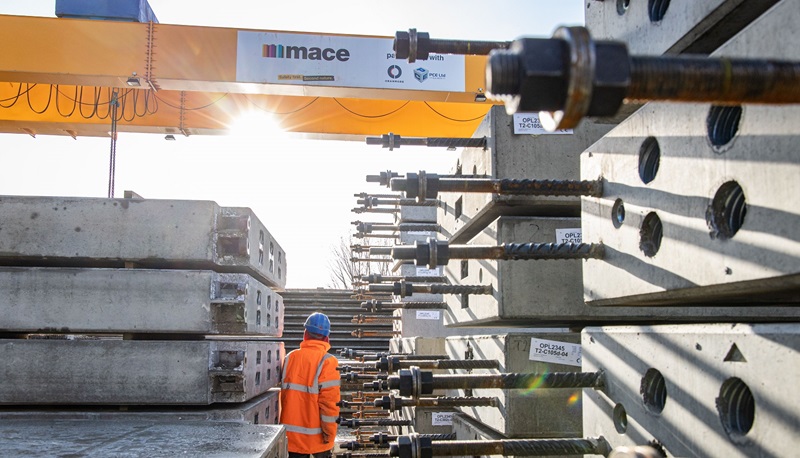Perspectives
Building a nuclear future at pace
Advanced nuclear technologies (ANT) – consisting of advanced modular reactors (AMRs) and small modular reactors (SMRs) – are set to emerge at the heart of energy generation strategies around the world. A low-carbon solution, with a consistency of output not seen from the likes of solar and wind, the technology’s role in the energy mix seems certain.
An often-touted benefit of these modern, modular alternatives to large-scale gigawatt is that they are quicker to build, bringing energy on-stream sooner. That may be so, but they’re still complex and come with all manner of intricacies and interdependencies. Effective and quick delivery calls for innovation and integration, writes Rachel O'Donnell.
Modern methods for a modern solution
If, as expected, ANTs (and in particular SMRs) are to see rapid growth around the world, we need to be ready to build them at pace. Clearly, different countries will have their own checks and balances when it comes to approving and regulating the construction of nuclear power facilities, but there are some principles that apply no matter the geography and these must be embraced.
SMR’s are already capitalising on off-site manufacture, with critical technical components produced in-factory to speed up construction and ensure a consistency of standard. This industry willingness to engage with modern methods of construction (MMC) provides a foundation for implementation across entire ANT campuses. MMC, or Construction to Production (C2P) as we call it at Mace, is ripe for implementation across ANT facilities. From components at the heart of energy generation to the ancillary buildings that keep the operation functioning, C2P can help drive the pace of delivery and get these facilities online sooner.
While speed of delivery – and cost benefits associated with a shorter programme – will undoubtedly stand out as attractive reasons for the ANT community to embrace C2P, there are plenty of other advantages.
With SMRs capable of generating less energy than traditional nuclear power plants, more are needed to meet demand. There is value in having localised energy sources, but challenges too. C2P can help to achieve a standardisation across all sites, giving confidence in operational performance from the outset. Using prefabricated components also enhances the construction phase, reducing the number of vehicle movements (often along rural, inadequate routes) and improving health and safety by streamlining on-site requirements.
Although ANTs are emergent, the precedent for the use of C2P has been set across other sectors and the knowledge is there to be gleaned. The methodology was central in our response to a client brief for standardisation and repeatability across a national prison estate, for instance. And the data from a complex high-rise development in London that used C2P showed that the pre-fabrication of 1,750 off-site sub-assemblies resulted in a 75% reduction in waste, a 20% reduction in carbon, and a 200% increase in productivity.
With the energy sector at the forefront of the carbon neutrality challenge, and at a time when speed of ANT delivery needs to ramp up, a tried and tested yet innovative methodology like C2P surely has a place.
Tying it together
Mace’s ability – in a consultancy capacity – to leverage hands-on delivery experience, such as the implementation of C2P, is one of the things that makes us stand out. But it is that core consultancy offering that provides clients with a holistic service across a project or programme lifecycle.
This end-to-end capability is perhaps most pronounced within the delivery partner model. It’s an approach that fosters a one-team culture, with the client, consultant and contractors working in partnership to enable consistency, value for money, transparency and a single point of responsibility. Crucially – and especially so for nuclear power projects – while the delivery partner seeks to take on more-than-typical accountability, the client always remains at the centre. Indeed, the approach intends to remove burden from the client organisation, giving it more headspace and time for the aspects it should be focusing on. In the case of ANTs, that’s managing the highly technical reactor ‘in the middle’.
For SMRs to deliver a meaningful proportion of global energy demand, we will need to build a network of them. Like there are benefits to standardising construction through C2P, the delivery partner approach can set a common vision across an SMR portfolio, serving as an integrator of sorts, sharing best practice and finding synergies across programmes and through a trusted supply chain. The ability to draw on past experiences proves to be particularly valuable when overcoming challenges and identifying opportunities. Whether that’s technical design matters or implementing a strategy to integrate with the local electricity network operator, having a reference point to build on can speed things up considerably.
A blend of innovative delivery techniques and intelligent consultancy services, like project management, PMO, cost and commercial management and business advisory, isn’t necessarily anything new. But it also isn’t necessarily something that every project implements from the start. With ANTs presenting a progressive and positive energy solution around the globe, it’s essential that we have a delivery approach to match.









